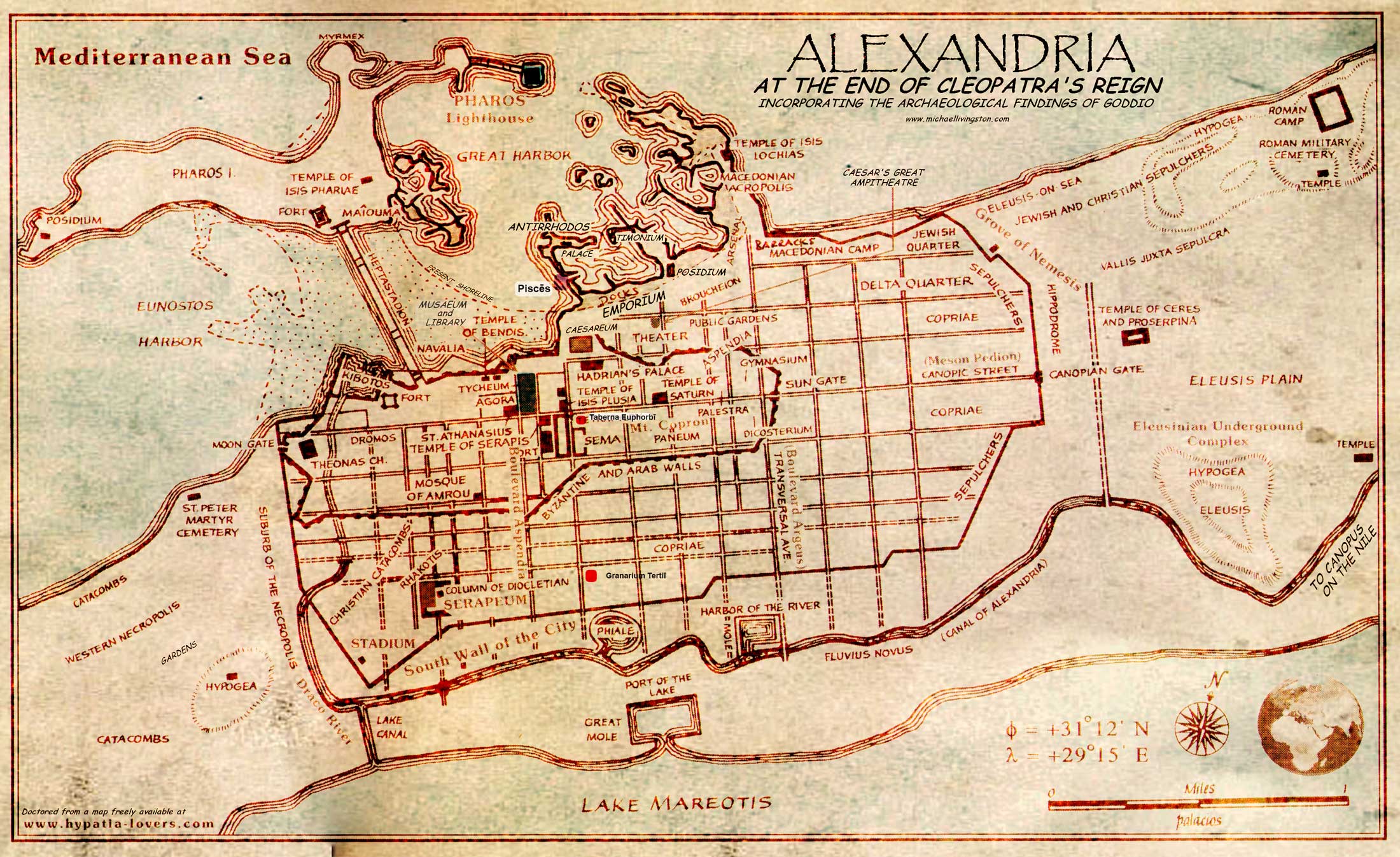Tab
Please make your selection from the above CODEX menu options for Episode 11.2
KEY-TEXT
Listen to the audio feed from TSTT Mission Control as you read, operatives.
duōbus diēbus ante ruīnam Pompēiōrum
"Sextus Aemiliānus Tertiō suō:
mī frāter, habeō nūntium grave. Marcus Maecēnās inscrīptiōnem Herculāneī invēnit quod Recentiī eum ad forum oppidī dūxerant. nepōs Gāiī Maecēnātis tīrōnēs, quī omnēs Mīlitēs Lapidis spectant, trāns Ītaliam mareque habet. Marcus quoque tīrōnēs in Aegyptō prope tē habet. volō cum Recentiīs manēre sed nōn possum. terra herī vehementer sē movēbat et hodiē vehementius sē movēbat. perīculōsum in Pompēiīs manēre est atque egō et Recentiī Stabiās hodiē discēdimus.
in Stabiīs est inscrīptiō. Marcus vult inscrīptiōnem legere atque dēbēmus advenīre antequam ille adveniet. mox Recentiī ad tē in Aegyptō advenient. tū dēbēs eōs invenīre antequam Societās Potentium. ego putō Lapidem, quem quaerāmus, in Italiā nōn esse sed in Aegyptō.
valē."
{slider Visual Walkthrough color="green"|closed}
{/sliders}
GRAMMATICA
Operatives, at this time we here at Mission Control would like to let you in on a little secret about nouns when you look them up in the CODEX or in a standard dictionary. Since Mission 7, you have seen nouns listed in the following format:
puella, puellae; f - girl
For every noun, the format is the same. The first form listed is always the nominative (subject) form. The second form listed is always the newly introduced genitive (possessive) form. This is very important to know because with these two forms, you know exactly which declension (group) the noun belongs to and, thus, every other form that it exists as. The genitive is the key to unlocking this information.
In the example above (puella, puellae), the genitive form (the 2nd form listed) ends in an "ae". As a result, that noun is a 1st declension noun.
Now consider this next noun:
servus, servī; m - slave
Here, because the genitive ends in "ī", this is a 2nd declension noun.
And lastly:
lapis, lapidis; m - stone
Here, because the genitive ends in "is", lapis is a 3rd declension noun.
This information is very important and helpful to your continued success in Operation LAPIS. Remember, always look to the genitive (the 2nd form listed) to find out to which group the noun belongs.
VERBA
CULTURALIA
ATTUNEMENT
KEY-TEXT Comprehension Questions
Directions: Read the key-text for 11.2 and answer the following questions.
1. What kind of message (happy, angry, etc...) is Sextus sending Tertius?
2. What does he say Marcus has found?
3. Where does Marcus have tirones?
4. What is the job of these tirones?
5. Why can't Sextus stay with the Recentii?
6. Where is the inscription?
7. Where will the Recentii be soon?
8. Where does Sextus think the Lapis is?
Hidden sentences:
Directions: In each section below, "collect" each word that fits the carta collectionis element shown. The words that remain are the hidden sentence. Then translate the sentence into English.
1. genitive singular
puellae nolī Clementis putāre Lapidis dē Romae chartā Salviī.
2. pluperfect verbs
fēcerātis quid fēcistis dēderās hīc dīxeram in spectāverat Alexandriā habuerāmus?
3. relative pronouns
quai Tertius cuius Aemilianus cuī in quod cavō quō absconditō quae sub quibus granariō quem ruinosō quam prope quōs portum quās habitat quā.
4. adjectives
magna celeriter, parvum dicite celer mihi malus quid bonās vōs meī scitis gravis dē Italiā!
5. prepositional phrases
in prorō quomodo in piscinam eōs per ianuam hortārī ex Britanniā debeō ad Italiam?

